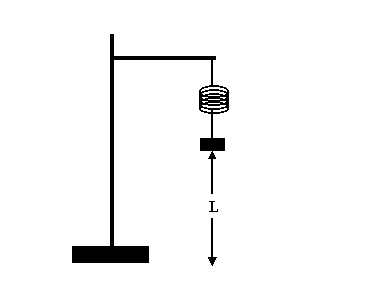

 PYL
105: Lab 8
PYL
105: Lab 8



Hooke's Law
Finding the spring constant
An object is elastic if
- it is deformed when a force is applied, and
- it returns to its origin shape when the force is removed
Our example of an elastic object will be a spring. You can apply a force that
stretches or compresses it. The force that opposes the applied force is called
the restoring force. If the restoring force is proportional to the amount
of deformation, the object is said to obey Hooke's law.
Static Case
Kinetic Case
- Pull the mass down a few centimeters and release.
- Record the motion.
- Build an Excel spreadsheet similar to last week's
lab. There should be a number of rows with each row containing:
position, position time, velocity, velocity time, the
adjustments so that velocity and position are measured at the same time,
calculate all kinetic energy terms, all potential energy terms, total
mechanical energy.
- Gravitational potential energy can be measured
relative to "any" reference point -- use the motion detector's postion.
-
BUT, the spring's potential energy must be measured relative to its
equilibrium position.
- Make a plot of position versus time and velocity versus time
(2 items on one graph).
- Make a plot of total energy versus time and
gravitational potential energy versus time (2 items on one
graph)
- Does the spring have kinetic energy? Does the spring have gravitational
potential energy?



 PYL
105: Lab 8
PYL
105: Lab 8




